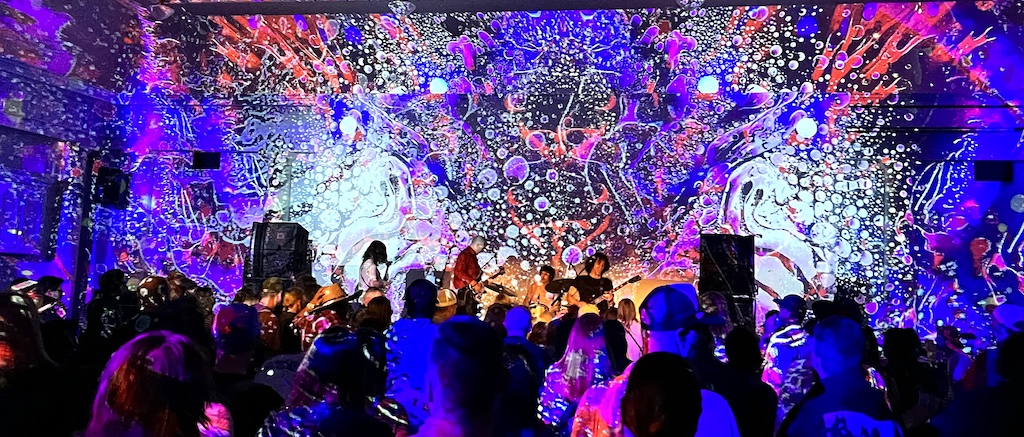I had been in Boise for maybe two hours, and I was already seeing the city’s most renowned musical product performing on the Treefort Festival Main Stage: Built To Spill. It was the Pacific Northwest equivalent of having a hula dancer put a lei around your neck upon arriving in Hawaii. But instead, it was like “Welcome to Boise, Idaho! Here’s Doug Martsch on stage!” Sure, it felt like an immediate rite of passage to see Martsch singing and shredding his way through “I Would Hurt A Fly,” but it was really a function of Treefort‘s concentration in the Downtown area. No sooner than you set your bags down, are you immediately wrapped up into the fold. And so began my four days in Boise…
It’s a refreshing feeling to be able to travel to a music festival again. After nearly two years of the live music industry going dark, festivals obviously didn’t escape the virus’ wrath. The beauty in traveling to a festival is in witnessing the vibrant communities that are formed that leave the most lasting marks. Sure, chasing headliners and stacked lineups is fun in and of itself, but if there isn’t a distinct community feel that takes shape at a music festival, then everything just becomes that proverbial “large empty field to do drugs in.”
Downtown Boise has a perfect setup for the effective exercise in community that is Treefort. There are dozens of venues within a stones throw of each other and for the 10th time, they all became the grounds for the yearly ritual which saw over 500 artists performing in a variety of capacities. It’s a showcase of artists from all over the world just as much as it is for Boise’s diverse venues, and you can literally walk everywhere.
Later that first night, Australian rapper Genesis Owusu would be putting down one of the best, most theatrical sets of the weekend over at El Korah Shrine. El Korah is run by the Shriners, a Masonic fraternal organization with roots in Boise for over 100 years. They’re staffing the shows and donning their ceremonial fez caps while they hawk casino-style chips that you use to buy drinks and sneaky good pulled pork sandwiches from Brother Brown’s BBQ in the basement of the venue. I went to El Korah time and time again and I came to love the quirks of its humble operators as much as the acts I saw on stage, like London saxophonist Nubya Garcia, New York’s 10-piece soul explosion Ghost Funk Orchestra, and yes, Built To Spill again at the tail end of the festival on Sunday night.
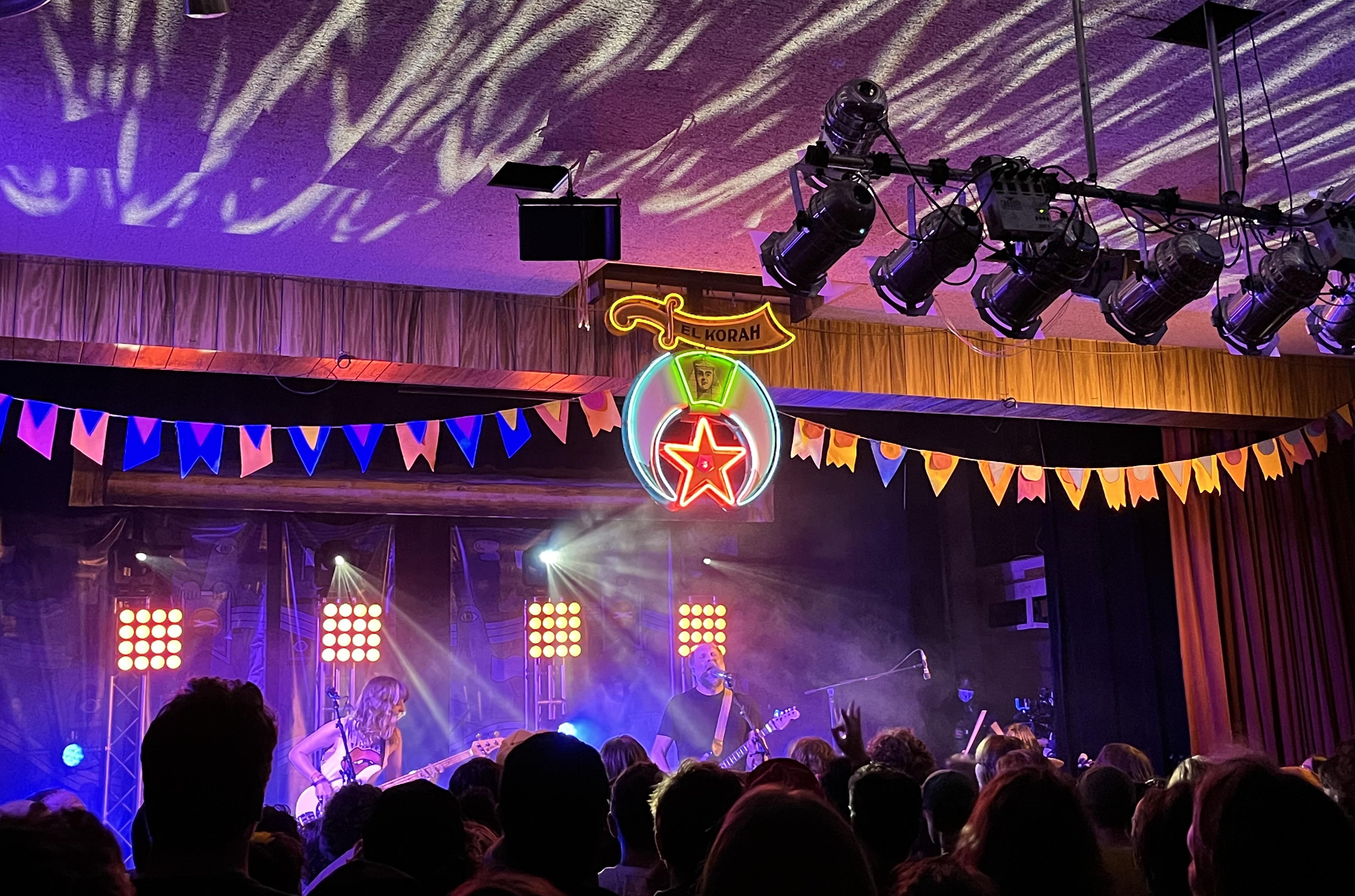
“It was a big boost to be able to say that we had Built To Spill playing the festival in that first year and it helped us attract other talent to Treefort early on,” festival director and co-founder Eric Gilbert says. “Now it’s this national stage in town once a year and there’s so many opportunities for local bands to learn from. There was no framework for that before.”
Gilbert also books Downtown venues in Neurolux, The Olympic, and The Knitting Factory year-round, and Treefort has helped maintain the city’s continuity as a solid tour stop for bands coming through the West Coast or Pacific Northwest. “Neurolux is the anchor for our independent rock scene,” Gilbert says of the 300 capacity room. And you feel that when you’re at Treefort; the independent ethos of Boise’s live music scene.
But there were also experiences that I knew were special to the festival. When I walked into the two rooms of the Sonic Temple venue (an old Masonic Lodge which I was told would soon be converted into lofts), I was immediately enveloped by Mad Alchemy’s liquid light show projected on every wall of the room. This place was transformed into a haven for different forms of psych rock. I saw bands I wasn’t especially familiar with, but people were going nuts over. Acts like Chicago’s Paul Cherry, Atlanta’s The Muckers, and Portland’s Spoon Benders performed, all while live lighting technicians were dropping colored dyes on spinning plates under projectors that made it feel like we were dancing inside of a kaleidoscopic. It was surreal.
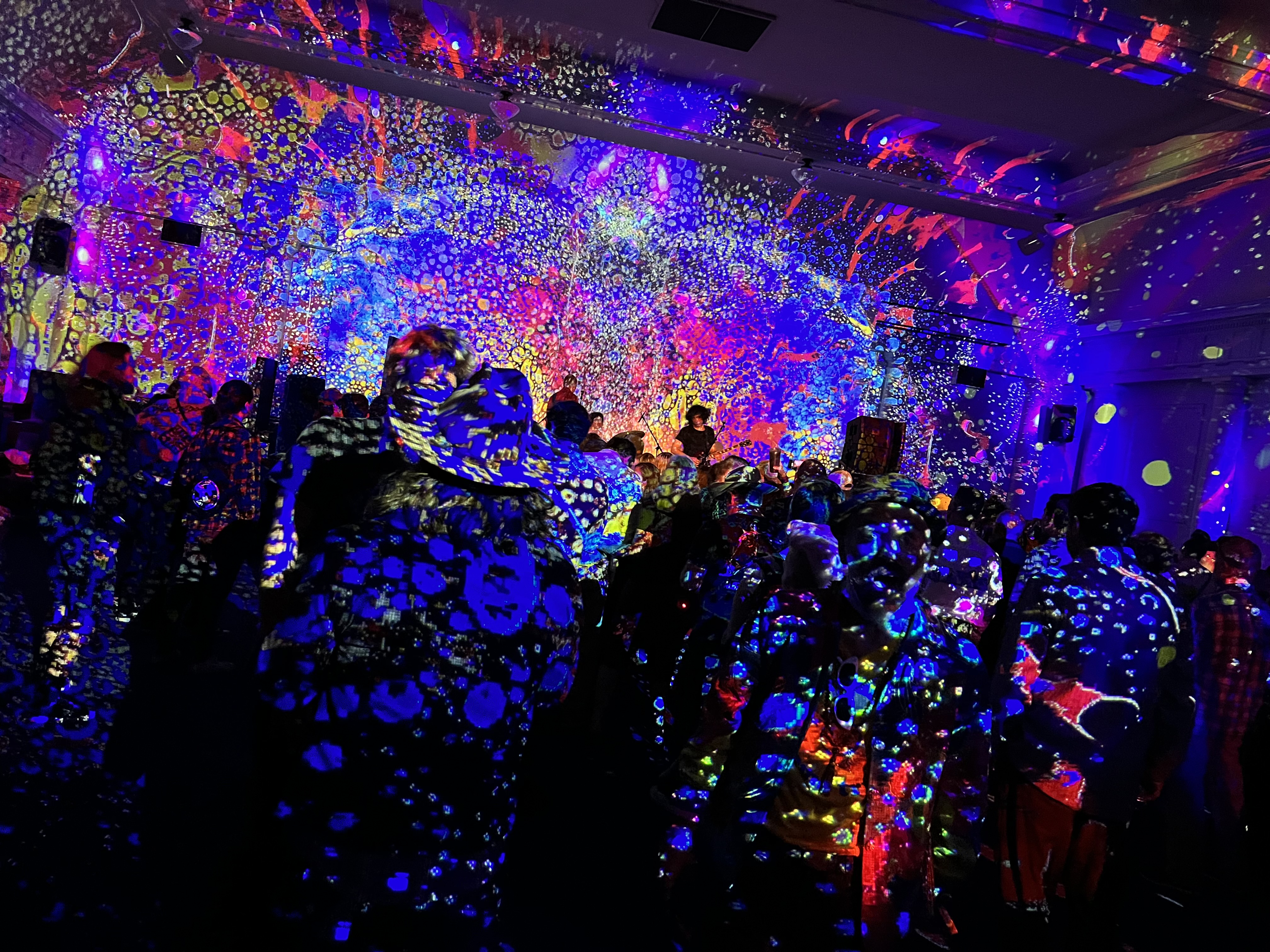
I was weary on Sunday night and laid on the grass of a small natural amphitheater to bask in the ambient glory of NYC’s William Basinski at Kin — a noodle bar with a small stage in this outdoor setup. I went to see the technologically-charged hyperpop of LA’s Magdalena Bay at the Egyptian Theater, a classic movie house encrusted with Egyptian iconography that while technically seated, most revelers stood up and danced in what was likely one of the biggest crowds the band had on their headlining tour.
And everywhere I went, I kept bumping into artists I had seen earlier that day. I watched a sweet set from Toronto indie band Ducks Ltd early one afternoon and later that evening, I spotted singer Tom McCreevy outside of El Korah. It gave me an opportunity to pat the dude on the back and tell him I dug his set. It was a warm and convivial feeling that felt like well… community. Heck, I had a laugh with Doug Martsch one morning hanging around the “Rigsketball” court. Rigsketball itself was a welcome attraction — a basketball hoop mounted on the back of a tour van where standing on the van for alley-oops or blocked shots is highly encouraged. Bands duked it out in a tournament but Martsch said he was done making it rain for the day and drifted off towards downtown.
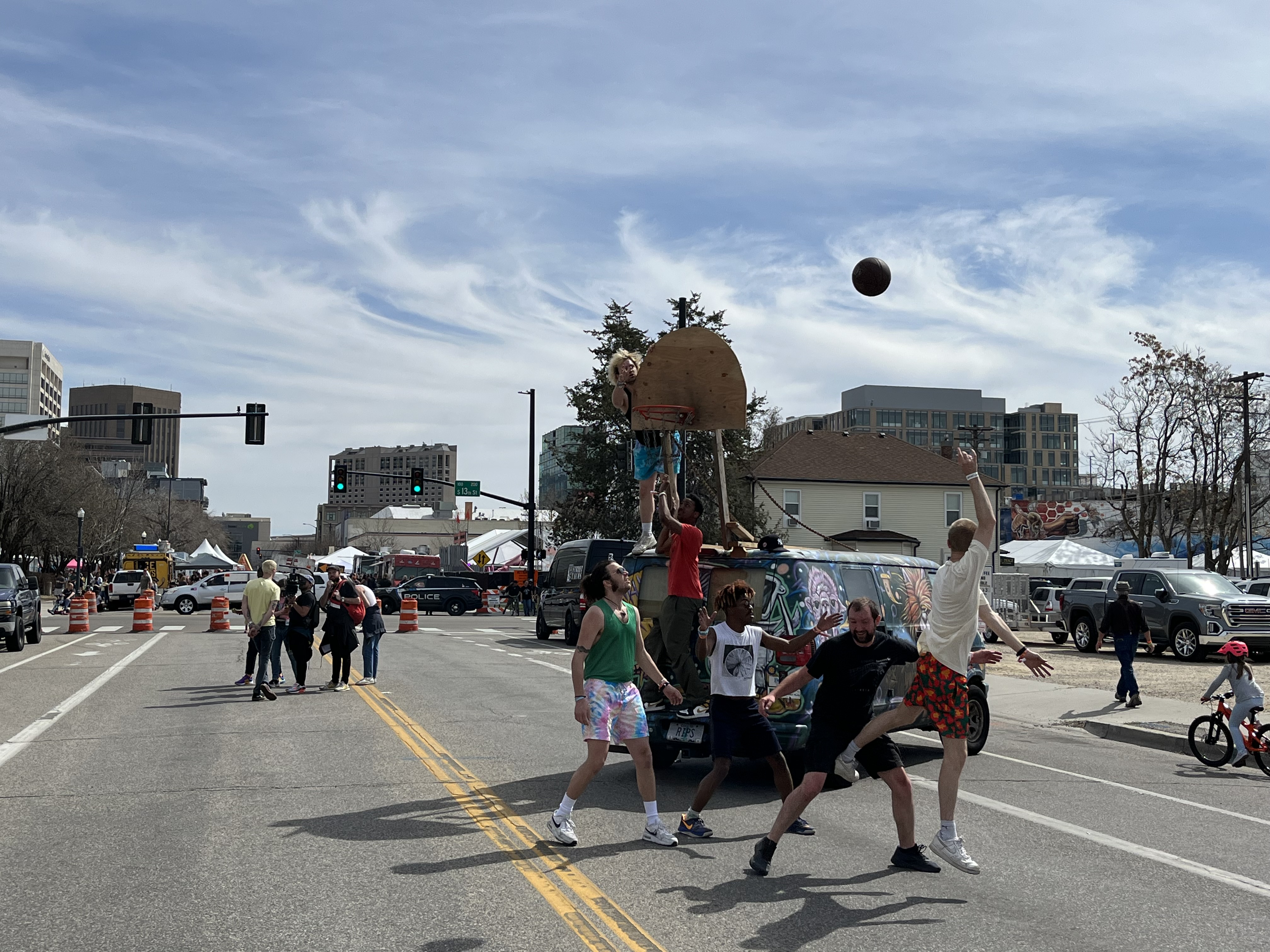
I caught the hypnotic psych-pop of Brazilian band Atalhos at Neurolux on Friday and on Sunday, I found myself watching Montréal band Men I Trust with them and the absolute perfection of Kim Gordon’s indie-rock royalty on the main stage. Atalhos had just made their way to Boise from South By Southwest (SXSW) in Austin and singer Gabriel Soares was relishing in how welcomed the band had been in Boise on their first time touring in America from São Paulo. It was also refreshing to know that unlike a broad scope of SXSW’s performers, a great number of artists at Treefort are paid, and have their lodging covered as well. What a concept!
“It was a surprise for us to be received like this,” Soares said. “Sometimes we don’t even have this in Brazil. People were so warm and stopped us on the street to tell us they thought we were amazing. We got fed, paid to play, a hotel… We really felt valued as artists.”
The main stage was a homebase that I returned to every day. It was a great place to see established acts like Sinkane, Caroline Rose, and Deerhoof without having to worry about how much space you needed in the lively crowd. And there were free earplugs for all! (Protect your ears, live music lovers.) There was an on-site beer garden with an awesome selection of Idaho breweries like Mother Earth and Payette. It was a plastic-free zone, so everyone had an aluminum pint glass (I clipped mine to my belt loop), making it so the end of each night wasn’t that dreadful festival sea of plastic cups on the ground. It was a thoughtful and sustainable wrinkle that everyone bought into. And if you wanted even more beer options, the adjacent “Alefort” (one of many other Forts) was craft beer heaven, with dozens of beers from all over to country, albeit with a palpable focus on the PNW.
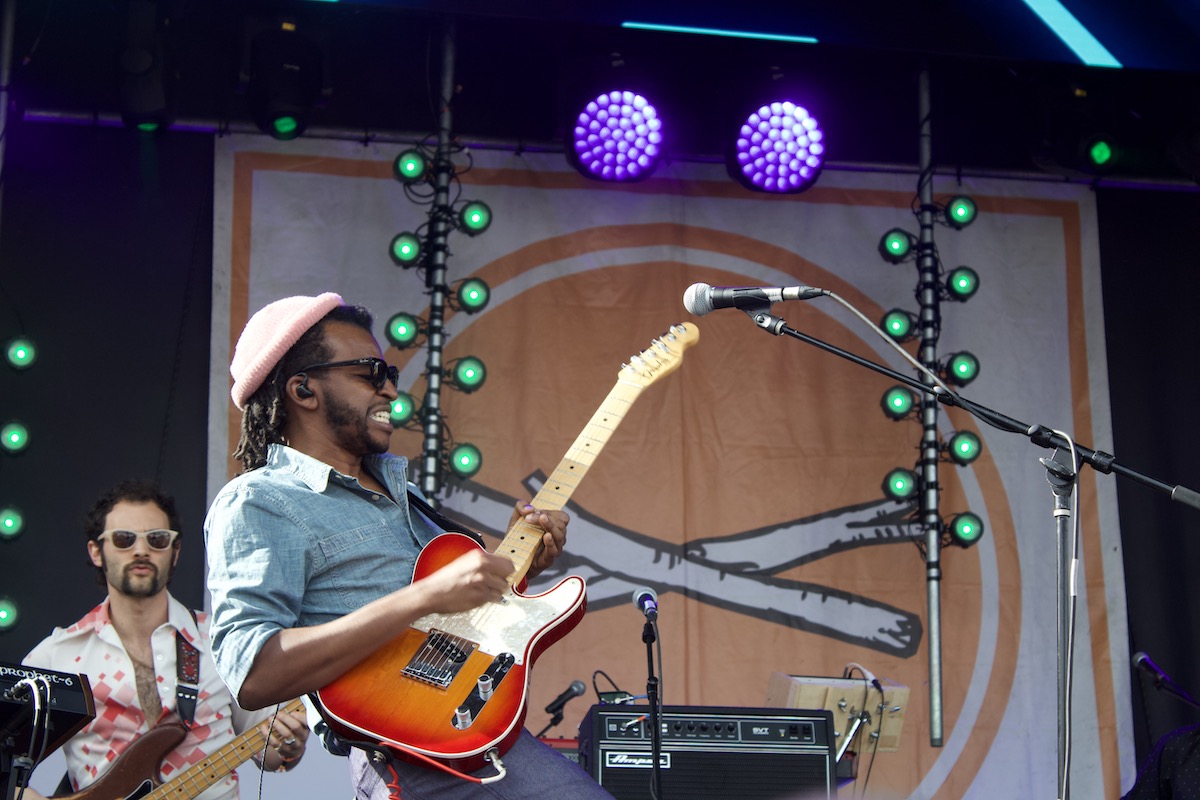
There were times when I wanted to chase the bands from my hometown Bay Area scene, like French Cassettes and Sour Widows. And I did. At other times, I wanted to check out bands from somewhere else, like Brooklyn’s Nation Of Language and the beautiful Long Island punk of Jeff Rosenstock. So I did that, too. And one night, I just wanted to get as far away from the Downtown grid as possible to see what else was out there. So I hopped on a scooter and went across the Boise River for a seven-minute ride to see San Diego jazz fusion guitarist Jared Mattson explore the sounds of a future album at Lost Grove Brewery. And I loved it. And after a while, I found harmony in knowing that I controlled every aspect of this experience. Because that’s what a good festival should provide: the ability to choose your own adventure.
On Saturday afternoon, I was basking in the Idaho sun seeing the pioneering African Zamrock band WITCH on the main stage. And it felt like a number of scenes and communities were converging at Treefort, supporting each other and building community with other scenes. Yes, the festival definitely builds up the Boise independent scene, but it also leads to a greater interconnectedness among us all. Treefort felt full of music lovers from all walks of life. Like… actual music fans and not so much the trust fund crowd you see having their way at mega-festivals.
There were friends finally being able to greet each other with a hug again, a mom deeper into the moment than her teenage daughter, people dancing drunkenly through the crowd, and artists getting a chance to relax and catch a show after they had already played. It felt so good, and like such a privilege to be back amongst this, and then I paused to focus on WITCH singer Jagari. This was a man whose band was at their peak in the ’70s in their native Zambia and didn’t tour in the US until 2019, just before the pandemic began. Donned in a traditional garment, he exuded gratitude as he shared his gift with the people. Our journey back to being at music festivals was long, but it was nothing compared to this man’s rebirth, and finally getting an opportunity to take his music to the world.
“I don’t know about your past,” Jagari said to the crowd. ”But we are meeting at this future.”
Uproxx was hosted for this event by Treefort. However, Treefort did not review or approve this story. You can learn more about the Uproxx Press Trip policy here.

